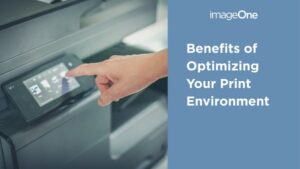The average price of a copier dramatically varies depending on the functions and the volume it’s expected to produce. That being said, you can find a little desktop copier as low as say seven to $800 and a full-size unit for an office space can go all the way up into about 15 $16,000. The huge gap in between these two.
Which Copier is Right for Me?
So how could I figure out what kind of copier is best suited for my company? First, you’ll want to eliminate any copier that’s considered a “home-use” machine. Non-commercial machines simply aren’t designed well for an office space, especially when we’re looking at security for networks.
Although prices can vary, prices for commercial-level devices typically start at around $700. Anything under that price point likely won’t work for an office setting. Some incredibly heavy-duty machines can reach above $15,000!
paper size, um, and like features usage and paper size. speed matters,
Low end speed would be 25 to 30 pages per minute. A high end speed is going to be up and to 80, 90 pages per minute. the brand itself matter when it comes to price or is there always a range depending on whatever the major brands that are out there? There’s always a range pricing. The price really depends on, on the speed and the size of the engine of the unit.
Which Copier Functions are Needed?
Copy machines can potentially contain all sorts of useful gadgets and technology. However, which ones are really worth the extra money?
Paper Volume
It’s essential to have a solid understanding how much paper your company currently uses per month. This number plays a huge role in determining the perfect copier to suit your needs.
If you aren’t sure how to calculate your page volume, you can determine a rough estimate by counting the number of reams used. Or, for a more accurate number, contact a reputable managed print service as they can determine an accurate count through an analysis.
Does your copier need to print pages double-sided, also known as duplexed? Should it print in full color? How many pages would you like to scan at once? These are just a few of the many questions you’ll want to consider before choosing a copier.
Paper Trays
Picking an ideal great paper tray add-on is important in terms of user-efficiency as they allow for the printer to hold more paper before it must be refilled again. Solidifying the factors above will help you narrow down the right option for you.
For example, if your company prints a high-volume of paper, you’ll want an added paper drawer. Otherwise, you’ll be stuck constantly stopping print jobs and refilling those drawers. The key factors to consider when determining paper drawer sizes.
Speed
Speed is often very important in office environments—although it can mean several different things.
The speed a page comes out after the user hits “Print.” This is usually measured by pages per minute, or how many pages a device can output in a single minute.
The average printer can comfortably handle up to about 50 pages per minutes. However, if your company needs to send hundreds of pages through each minute, you’ll want to choose a machine that capable of keeping up with that higher capacity.
Which Accessories Do I Need?
Fax Card
Not every copier is designed with a fax option. So, f you have to have a fax and you know, you will need to add a fax card to it as my paper. A example wise,
Multiple Paper Trays and Drawers
Does your company regularly print copied pages on different page sizes? Or, do you print more than 3,000 pages per month? Then you should seriously consider adding additional papers drawers.
The same applies if you consistently print out envelopes. Though the occasional single envelope can be fed individually through a standard-issue bypass tray,
What Will It Cost?
Every copier has a recommended monthly print volume that’s set by the manufacturer. Essentially, a more robust machine can more pages every month—and a more robust machine that print more will also come with a bigger price tag.
Ideally, you’ll want to search for a machine that closely matches you monthly print output. That way, you don’t pay for more than you need. However, you don’t necessarily want to hit that number right on the dot either.
Let’s say that, on average, your company prints 4,000 pages per month. Rather than choose a machine that hits 4,000, we’d recommend going at least 1,000 pages more—although this buffer greatly depends on your company’s specific print environment.
Not only will this allow for wiggle room during the busy months, but also for any growth your company might experience. After all, print and copy devices are supposed to last for around seven years. Don’t risk outgrowing its use too soon.
Paper Size
The price of a copier also depends on what paper size you’ll need the device to be able to print. Machines that print A4 pages can handle paper that measures 8.5 x 14.” In contrast, A3 machines can print up to 11 x 17.”
- Toner
- Paper
- Plastic
If printing and copying A3 paper sizes are important to your company, than you’ll want to ensure the machine is capable of handling those particular sheet measurements. However, this capability can sometimes double the print of the machine, so be sure it’s actually a necessity before spending the money.
Paper Stock and Weight
The weight and stock of paper should also be taken into consideration. If you’ll be producing items like printing labels, stickers, heavy-duty promotional items, invitations on card stock, etc., be sure to choose a more robust device designed to handle heavier paper. Failing to “level-up” the copy machine might save money now, but you be paying for constant repairs and maintenance in the near future.
Does your copier need to print pages double-sided, also known as duplexed? Should it print in full color? How many pages would you like to scan at once? These are just a few of the many questions you’ll want to consider before choosing a copier.
The average price of a copier dramatically varies depending on the functions and the volume it’s expected to produce. Connect with me on Twitter and LinkedIn and keep up with my company imageOne. Check out my website or some of my other work here.




